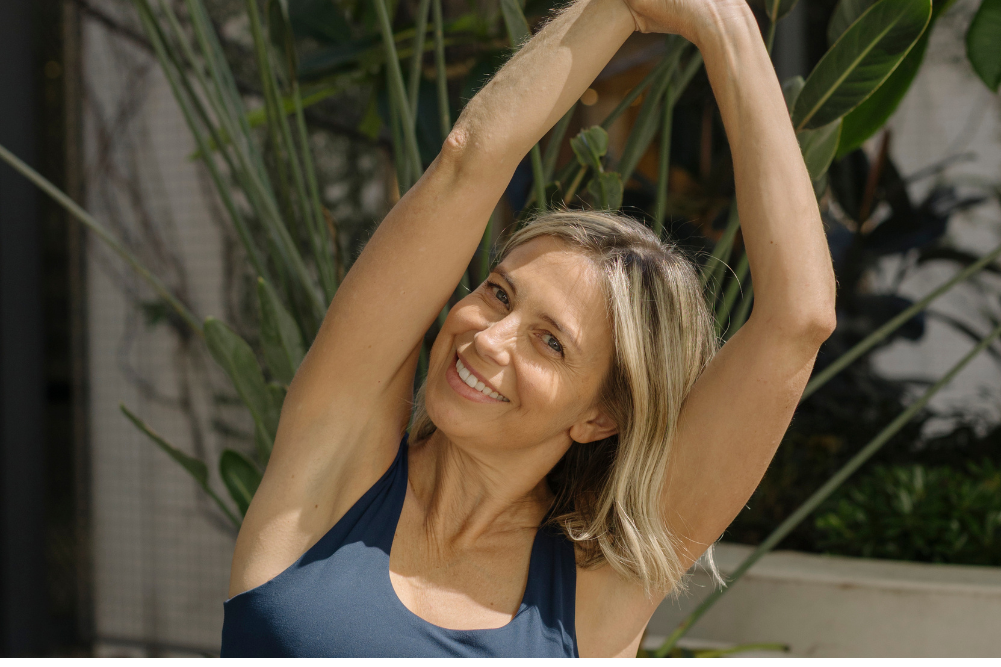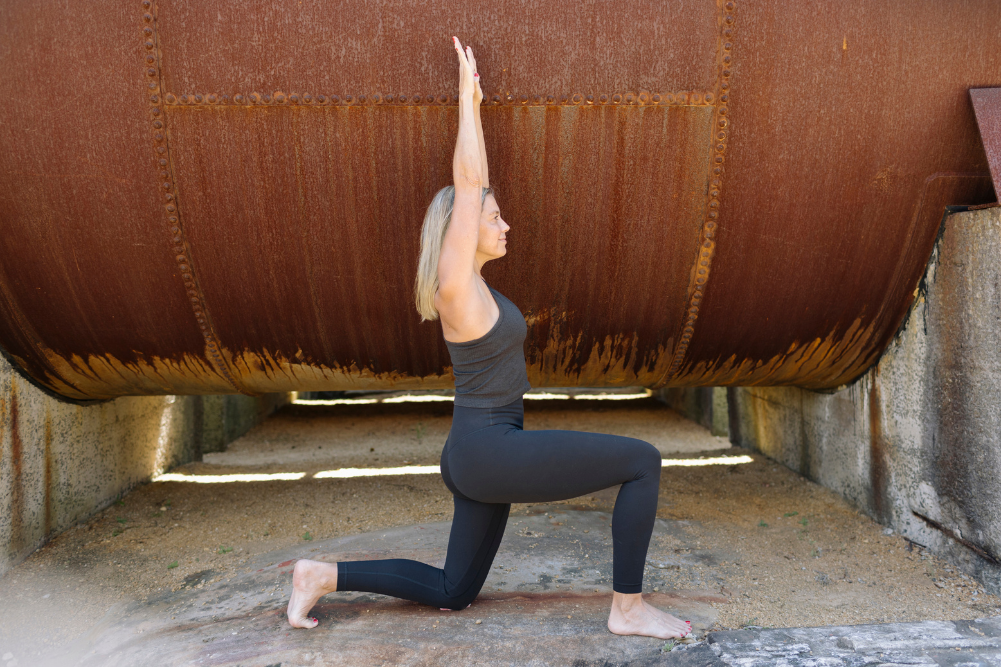8 ways a modern-day yogi can live in the world
It is no secret the popularity of yoga is spreading fast in Australia. Your osteopath mentions the benefits you might gain from yoga, your neighbour continuously talks about his practice, you see your local athletes doing yoga outside, then you notice a new yoga studio sign popping up in your suburb — and you decide to join a yoga class to see for yourself why so many people rave about yoga.
The Australian Bureau of Statistics backs up with facts the growing popularity of yoga you’re witnessing. Its Survey of Participation in Sport and Physical Recreation for 2011-2012 states that nearly 299,000 Australian women practised yoga in that period of time, making yoga the eighth most popular physical activity among the female population, and those numbers are increasing. The numbers of men practising yoga are also on a rise.
So what makes yoga so popular in our country?
Between June 2005 and January 2006, RMIT University conducted an extensive survey of 3832 people, of whom 2567 were yoga practitioners and 1265 yoga teachers. The results concluded that 61 per cent of the respondents’ yoga practice time was spent performing postural sequences and 29 per cent of the time was devoted to breathing techniques, relaxation and meditation practices. The most common reasons for starting a yoga practice included: stress and anxiety reduction (58 per cent), mental health issues (36 per cent), musculoskeletal problems (27 per cent) and women’s health (10 per cent).
Respondents commonly indicated they started practising yoga for health and fitness reasons and continued practising for stress management. The survey results concluded: “Regular yoga practice may have a protective effect on health and longevity due to associated lifestyle choices including healthy eating, regular physical activity, vegetarianism, reduced smoking, reduced alcohol consumption, greater spirituality/religiosity, reduced stress and other mental health benefits.”
Yoking body, mind & spirit
Such findings help give a scientific basis to the connection between the physical practice of yoga and its effects on the mind and broader lifestyle, as the body-mind awareness organically develops with regular yoga practice.
And that is no wonder, as yoga means “union” and is an ancient, well-tested system of philosophies and practices, the foundations of which were laid thousands of years ago in The Yoga Sutras of Patanjali, a yogic text in which the eight limbs of yoga form the core of the practice.
The literal meaning of asana is “comfortable seat”, implying that one is able to maintain that position with steadiness and ease and so prepare for prolonged periods of seated meditation.
It was through this text that, in around 200AD, the Indian sage Patanjali presented the world with an integrative step-by-step system of ashtanga, or eight limbs, directing practitioners of yoga to work towards achieving the union of the body, breath, mind and spirit.
The eight limbs of yoga, which are discussed below in more detail, comprise moral disciplines and personal observances (yamas and niyamas), postures (asanas), breath work (pranayama), ability to turn inward (pratyahara), concentration (dharana), meditation (dhyana) and the state of fulfilment and blissful absorption (samadhi) — the ultimate goal of yoga.
The first five limbs of yoga are described in the second book of The Yoga Sutras named Sadhana Pada, the book on yoga practice. The final three limbs are presented in the third book of The Yoga Sutras named Vibhuti Pada, the book on accomplishments that can be achieved through yoga practice.
Yamas: moral disciplines
Yamas relate to the relationships you have with yourself and others, and are defined as moral disciplines by which the society should live by. There are five yamas that teach to live in harmony and peace with yourself and the external world.
Ahimsa (non-harming)
Ahimsa is the central principle of the eight-limbed path of yoga and is defined by “not causing pain” to all beings. As Patanjali explains, it means not engaging in violence towards others, neither in action nor speech, as well as not causing physical, emotional or psychological harm to yourself and others.
Ahimsa encompasses the constant judgements and destructive comments you make towards yourself, as well as the more subtle expressions of harm the world is engaged in, such as the existence and support of factory farming and sweatshops, the use of toxic products that harm the environment, violence on TV, gossip and anger.
Practice of ahimsa in modern life encourages you to contemplate any aspects of violence you may cause. It requires compassion, courage and commitment to making mindful choices in your life daily, be it the way you conduct self-talk, food you choose to eat, entertainment you favour, transportation you use, or social and political causes your support.
Satya (truthfulness)
In the second yama, satya, Patanjali instructs to be committed to truthfulness in thoughts, words and actions. Sincerity and integrity of speech lies at the heart of satya. Truthful communication and honesty in action form a solid base of any relationship, community and government. As Bhavana Ram puts it, truthfulness is “instinctual knowing within us”.
Practising satya is not always easy but, by being mindful of your thoughts and speech, you can develop a deeper connection to your inner voice as well as the ability to recognise delusion and to follow your truth in the relationships you have with others and yourself, the friendships you form, your career and the lifestyle choices you make.
Asteya (non-stealing)
Practice of asteya is defined by not taking anything that has not been freely given to you. That doesn’t only include theft of physical objects, it also involves greed, depriving your friends or family members of time and energy, plagiarising other people’s ideas, illegal copying of artists’ “works”, overconsumption of natural resources and not sharing the possessions you no longer use with those in need.
Brahmacharya (appropriate use of vital/sexual energy)
Brahmacharya is the most misunderstood of the yamas, as it is often translated as “celibacy” and confuses “householder” yogis — people who are dedicated to yoga practice and are in relationships and/or have families. Practice of brachmacharya in modern life invites yoga practitioners to be mindful of their sexual energy expenditure and advises yogis to form meaningful and intimate relationships and to practice, as Frank Jude Boccio writes in his book Mindfulness Yoga, “sexually responsible behaviour free from exploitation, aggression and oppression”.
Aparigraha (non-greed/non-hoarding)
Modern society measures wealth by its financial success, possessions and social status. While material possessions can be enjoyed, aparigraha teaches not to be defined by them and not to accumulate what is not necessary. Deeper application of aparigraha involves generosity by sharing and giving away the things you do not need, not overusing the world’s resources, and practising gratitude for the abundance you already have in your life.
Niyamas: personal ethics
There are five niyamas, or personal observances, which are directed inward and encourage yoga practitioners to take good care of their bodies and minds.
Sauca (cleanliness)
Sauca implies purification of the body, speech, mind and surroundings. Cleanliness of the body involves hygiene and diet consisting of pure natural foods free of additives, preservatives and toxins. Purity of speech includes abstention from harsh language, gossip and judgements. Cleanliness of the mind is achieved by cultivating positive, kind thoughts, surrounding yourself with people who inspire you, and choosing forms of entertainment (books, TV programs etc) that nourish your mind. In relation to your surroundings, practice of sauca involves maintaining a tidy, uncluttered household which brings more peacefulness and order to your life.
Santosha (contentment)
Santosha is the ability to be content, at peace and grateful for what you already have, refraining from greed and desire. It is the practice of patience, acceptance of reality for what it is and abstention from anger and frustration.
Tapas (austerity, self-discipline)
Tapas translates to “heat”, which long-time yoga teacher Donna Farhi refers to as “burning enthusiasm”. She elaborates: “Like a focused beam of light cutting through the dark, tapas keep us on track, so we don’t waste our time and energy on superfluous or trivial matters.” Inspiration and motivation ignite tapas in you, which in turn expresses itself in increased level of self-discipline and commitment to your yoga practice.
Svadhyaya (self-study)
Svadhyaya comprises the study of the self, self-enquiry, as well as the study of the relevant scriptures. Study of yogic scriptures activates your reflective skills, enhancing your development as a yoga practitioner, where the process of self-enquiry invites you to face yourself by revealing your inner nature.
Isvara-pranidhana (devotion to a higher source)
Often translated as “devotion to God”, this niyama causes confusion in the minds of some beginner practitioners. Yoga is a practice that in no way advises which spiritual ideal or form you should follow, align with and surrender to (pranidhana). Thus, the higher source (isvara) should be looked at as your personal choice of and connection to the divine, whether it is formless — as cosmic consciousness, emptiness, ultimate reality or higher intelligence — or has a form — such as Buddha’s nature, the Christian God, Jesus, Krishna, Tao or something else that resonates with you. Surrendering to the higher source means to practise humility, and be present and mindful of the reality.
In daily life, isvara pranidhana can be applied by humbly showing respect to those with greater knowledge than yours, letting go of the ego-controlled reactivity, recognising the divinity in all beings, and taking time to sit in stillness to unclutter and quieten the mind and to witness the silence within.
Asanas: postures
Although Patanjali never mentioned the health benefits of the postural practice in his text, he emphasised the importance of asana, placing it third in his eight-limbed system of yoga. The literal meaning of asana is “comfortable seat”, implying that one is able to maintain that position with steadiness and ease and so prepare for prolonged periods of seated meditation, which can be achieved when the body is healthy, strong and free from toxins, tension, pain and stiffness. This makes the practice of yoga postures essential to a modern-day yoga practitioner in preparation for meditation.
While material possessions can be enjoyed, aparigraha teaches not to be defined by them and not to accumulate what is not necessary.
While physical perfection is not the goal of yoga, asana practice is a way to develop inner awareness and body-mind connection and increase flexibility and strength, as well as release tension and improve general health and wellbeing. Ramamurti S Mishra, MD, in The Textbook of Yoga Psychology, explains this in simple words: “Yoga postures and exercises must be smooth, calm and peaceful because yoga prepares a student to control his body, not to kill [exhaust] it.”
Asana practice can also help improve your posture and balance, together with the functions of the digestive, cardiovascular, immune, respiratory and reproductive systems. Plus, yoga has proven to be effective as therapy, helping to heal the body from various health conditions including chronic back, neck and shoulder pains, arthritis, obesity and hypertension.
A large-scale research study on the curative effects of yoga conducted by Robin Monro, PhD, in London involved a survey of 2700 people who used yoga asana to treat their conditions. The results showed that 94 per cent of the participants suffering from anxiety, 100 per cent of the alcoholic participants and 98 per cent of respondents with back disorders found yoga practice beneficial, while 90 per cent of the participants who were recovering from cancer, dealing with duodenal ulcers and experiencing arthritis and rheumatic conditions found yoga helpful.
In her article published in the Evidence-Based Complementary and Alternative Medicine Journal, Kyeongra Yang, PhD, reviewed 32 studies on yoga published between 1980 and 2007. Her research concluded that yoga practice was generally effective in decreasing body weight as well as reducing blood pressure and glucose and cholesterol levels.
Pranayama: breath regulation
Prana means “breath”, “vital energy”, “life force”, while ayama is translated as “extension”, “restraint”, “control”. Pranayama is the extension of life force which also includes the breathing exercises widely used by modern yogis.
Notice how your breathing becomes forced or choppy when you are angry, frustrated, nervous or agitated, and how calm, deep and smooth it feels when you are in a relaxed state. Ancient yoga masters appreciated the role of the breath, its dynamics and close connection to the mind. This led them to develop a range of pranayama methods, some of which can relax your nervous system, calm the mind and reduce stress levels, while others can boost your energy levels and increase cognitive functioning.
Current scientific research confirms the positive effects of pranayama practice.
Professor Luciano Bernardi, of the Italian University of Pavia, reported in a study published in the British Medical Journal in 2001 that slowing down the breath to six breaths a minute could positively affect the heart rate variability as well as reduce blood pressure and the activity of the sympathetic nervous system (the “fight or flight” response activated by stress), producing favourable psychological effects by activating the parasympathetic nervous system (your “rest and digest” response).
Other research, published in 2009 in the Journal for Alternative and Complementary Medicine, demonstrated that the practice of kapalabhati (stimulating skull-shining breath) can improve the focus and mental performance of a practitioner, while a preliminary study published in the Association for Applied Psychophysiology and Biofeedback Journal the same year showed that nadi shodhana (alternate nostril breathing) can decrease blood pressure.
Pratyahara: withdrawal of the senses
Pratyahara is the fifth limb of yoga, and a method of developing control over the senses and focus of the mind. This limb is a helpful tool for the modern-day yogi living in the fast-paced world of smartphones, media, loud music, fast food and traffic jams; for the yogi who’s constantly bombarded by phone calls, text messages, advertisements and emails and experiences overwhelm and sensory overload.
To practise pratyahara, you may decide to reduce your exposure to external stimuli such as TV, social media, noisy environments and mindless magazines. Rather, you may choose to spend more time drawing your attention inward, embracing silence and nature, cultivating positive thoughts and gratitude, mindfully practising asana, breath-awareness and self-enquiry.
Dharana: concentration
In yoga practice, dharana is acquired with practice and refers to the ability to maintain single-pointed focus on the object of your choosing. That object could be: breath; a physical object, such as a flame or a picture you focus your eyes on (the tratak method); sounds, through observation or repetition of mantra; thoughts; physical sensations you experience in the body; and/or the emotions you feel.
Practice of dharana, or concentration, is a preparation for the seventh limb of yoga, meditation.
Dhyana: meditation
Dhyana comes from the Sanskrit word dhyai, which translates as “contemplate” or “meditate”. Dhyana is a state that Patanjali himself describes as “continuous flow of cognition”, and which in turn can be understood as “effortless concentration on watching the mind”. It is the outcome of the fifth and sixth limbs of yoga: sense withdrawal and concentration.
Multiple research studies reveal benefits of concentration and meditation practices.
A recent study conducted by the University of California in the US concluded that mindfulness meditation practice can decrease levels of the stress hormone cortisol. According to Tonya Jacobs, a postdoctoral researcher at the UC Davis Center for Mind and Brain, “This is the first study to show a direct relation between resting cortisol and scores on any type of mindfulness scale.”
Practice of ahimsa in modern life encourages you to contemplate any aspects of violence you may cause. It requires compassion, courage and commitment to making mindful choices in your life daily.
Professor Jon Kabat-Zinn, founder of the Stress Reduction Clinic at the University of Massachusetts Medical Centre, and Richard Davidson of the University of Wisconsin, demonstrated in their research published in the Psychosomatic Medicine Journal that practising mindfulness can improve overall wellbeing by increasing self-esteem, calmness and happiness.
In another paper, published in the Frontiers in Human Neuroscience in 2013, the American researchers revealed that mindfulness exercises help people to deal with chronic pain and gain better control over the brain’s processing of pain and emotions.
More exciting research on the effects of meditation is still to come as Harvard Medical School psychologist John Denninger has recently found that mind-body techniques can switch on and off some genes related to stress and immunity. “The kinds of things that happen when you meditate do have effects throughout the body, not just the brain,” he told Bloomberg reporters in late 2013.
Samadhi: blissful absorption, enlightenment
Samadhi, often translated as “enlightenment”, is the highest of the limbs and the culmination of the practice of yoga. Samadhi is an ability to be wholly and fully absorbed in the present moment. It is the state of pure awareness and oneness with the universe, which some may experience when walking in nature, swimming in the ocean, meditating or through a prayer or love-making.
Swami Satchitananda comments in his translation of The Yoga Sutras: “In meditation you have three things: meditator, the meditation and the object meditated upon. In samadhi, there is neither the object nor the meditator … meditation culminates in the state of samadhi.”
Tools for living
The eight limbs of yoga equip you with valuable, practical tools for living in harmony within society, treating yourself and others with compassion and understanding, taking care of your body and mind by observing personal ethics, committing to self-study, developing mindful focus, remaining disciplined in your practice, withdrawing from the external stimuli and turning awareness inwards.
Patanjali teaches that, through practising the eight-limbed path of yoga, one can purify the body and the mind, attain physical and emotional health, and begin to understand the science of yoga, where the union of the body, heart (soul) and mind becomes possible.








